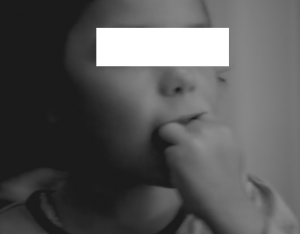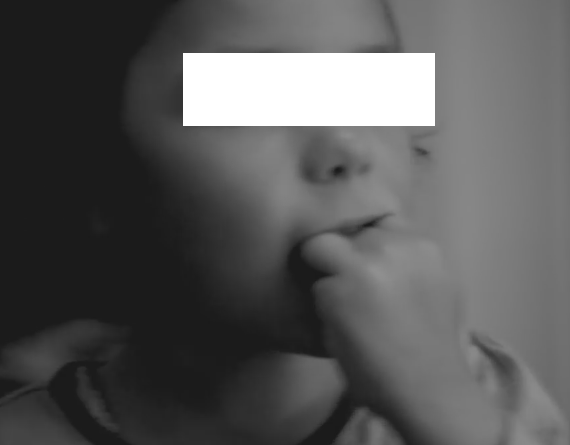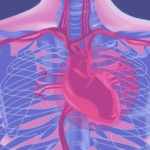Rett Syndrome was originally termed as cerebroatrophic hyperammonemia. It is an uncommon hereditary postnatal neurological condition of the brain’s gray matter which almost entirely affects girls but exceptional cases have shown to affect boys also. Characteristic clinical attributes involve small hands, feet and a reduced head growth rate.
The patients lack verbal skills and almost 50% of affected girls show inability to walk. Symptoms like scoliosis, constipation are common and tend to be very problematic. They also show growth failure. The syndrome leads to complications and failure in brain functions that play crucial role for cognitive, emotional, sensory, motor and autonomic skills. This results in impairment in speech, learning, movement, sensory sensations, mood, cardiac functioning, breathing, and even simple tasks like chewing, swallowing, digestion.
Overview
Rette Syndrome has often been misdiagnosed or confused with other ailments like cerebral palsy, autism, Angelman syndrome or non-specific developmental delays. However, Rett syndrome or RTT can be comparable to those non-autistic spectrum ailments where similar autistic features can be seen for example, fragile X syndrome, Down syndrome or tuberous sclerosis.
Rett Sydrome is a rare phenomenon occurring roughly 1 in 10,000 female childbirths spanning all geographies and encompassing all the races, cultures and civilizations. The syndrome was first explained by an eminent Austrian pediatrician called Andreas Rett in 1966 but it was first demonstrated by Huda Zoghbi in 1999. Zoghbi showed that the causative agent for Rett Syndrome was a mutation in a gene named MECP2. The X-chromosome of the gene MECP2 underwent mutation which led to the development of Rett Syndrome. Although the gene MECP2 is the site for occurrence of 200 plus different mutations, most of the alterations occur in 8 different sites or hotspots.
Rett Syndrome – Pictures


Diagnosis
Rett Syndrome can be confirmed with simple blood test methods that identifies the MPEC2 mutation. Since MPEC2 mutation is common to other syndromes, Rett Syndrome cannot be diagnosed using this particular test only. Hence, analysis requires either molecular diagnosis of presence of X-chromosome mutation or clinical diagnosis established on visible symptoms and signs or both.
Early Clinical Signs and Symptoms of Rett Syndrome
The child’s early development is normal. Symptoms for this disorder start appearing after a short initial period of seemingly normal or almost normal developmental process until 6 to 18 months prior to childbirth following which, there occurs slowing down of various skills showing subtle deterioration in development al processes posing early indicators for Rett Syndrome.
Gradually a phase follows when the girl starts losing communication skills and voluntary utilization of her hands. Soon after this, usual hand movements like hand washing, walking disturbances and decelerating rate of head growth becomes obvious. Other difficulties include un-systematic breathing patterns in awaken state and seizures. In the coming years, isolation phases or period of withdrawal is noticed as the girl becomes irritable and cries desolately. The girl’s motor problems increase with passing time but irritability reduces and eye contact as well as communication improves.
As discussed earlier, during the regression period of this syndrome, certain attributes are alike those of autism, due to which the former is often mistaken with the latter.
Symptoms of Rett Syndrome similar to that of autism– include creaming fits; inconsolable crying; incontinence; hyperventilation, air swallowing and breath holding; avoiding eye contact; lack of emotional and social reciprocities; loss of speech; sensory problems, etc.
RTT signs that are also common to celebral palsy– include short build sometimes with disproportionate body parts caused due to difficulty in walking or malnutrition problems because of difficulty in swallowing; hypotonia; delayed or impaired walking abilities; movement difficulties; ataxia; abnormally small head due to poor head growth; gastrointestinal problems; dystonia, grinding of teeth problems; sporadic movement of facial or hand muscles.
Rett Syndrome – Life Expectancy and Treatment
Presently, there are no cures available for Rett syndrome. Because the disease is rare, only little information exists about long-term diagnosis and life expectancy. Survival until mid-20s is possible and average life-expectancy is mostly mid-40s for a female diagnosed with Rett Syndrome. Death is often related to seizure, malnutrition, aspiration pneumonia, and accidents. But the good news is, several studies have revealed the possibility of a cure being present in restoring MECP2 function. To make such a cure possible, researches are being done using Insulin-like Growth Factor 1 (IGF-1), which has shown partial reversal of signs for mutant mice having Mecp2 genes.
Another promising idea for therapeutic intervention involves countering the neuroexcitotoxic effects of increased levels of spinal fluid of glutamate, a neurotransmitter as well as increased NMDA receptors inside the brains of young girls suffering from Rett Syndrome by using dextromethorphan. This has an antagonistic role to that of NMDA receptor in brains of girls below 10 years of age.
Treatment methods include controlling gastrointestinal and nutritional issues, surveillance of scoliosis, observation of long QT syndrome with the help of annual EKG, increasing the girl’s communication skills particularly with augmentative communication approaches, parental counseling, modifying social interactions, sleeping aids, therapies for speech and physical activities.

